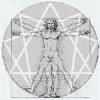B459 <=> B461 (BTG XXX Art, p. 460)
“’I personally suggest that this transmission to future generations be made through the human what are called “Afalkalna,” that is through various productions of man’s hands which have entered into use in the daily life of the people, and also through the human “Soldjinoha,” that is through various procedures and ceremonies which have already been established for centuries in the social and family life of people and which automatically pass from generation to generation.
“’Either these human Afalkalna themselves, and in particular those which are made of lasting materials, will survive and for various reasons will be handed down to men of distant generations, or copies of them will pass from generation to generation, thanks to the property which is rooted in the essence of man of giving out as one’s own, after having changed some minor detail, one or another of the productions of man which have reached them from long past epochs.
“’In regard to the human Soldjinoha, as for instance various “mysteries,” “religious ceremonies,” “family-and-social-customs,” “religious-and-popular-dances,” and so on, then although they often change in their external form with the flow of time, yet the impulses engendered in man through them and the manifestations of man derived from them always remain the same; and thus by placing the various useful information and true knowledge we have already attained within the inner factors which engender these impulses and these useful manifestations, we can fully count on their reaching our very remote descendants, some of whom will decipher them and thereby enable all the rest to utilize them for their good.
“’The question now is only this, by what means can such a transmission through the various human Afalkalna and Soldjinoha as I have described be actualized?

